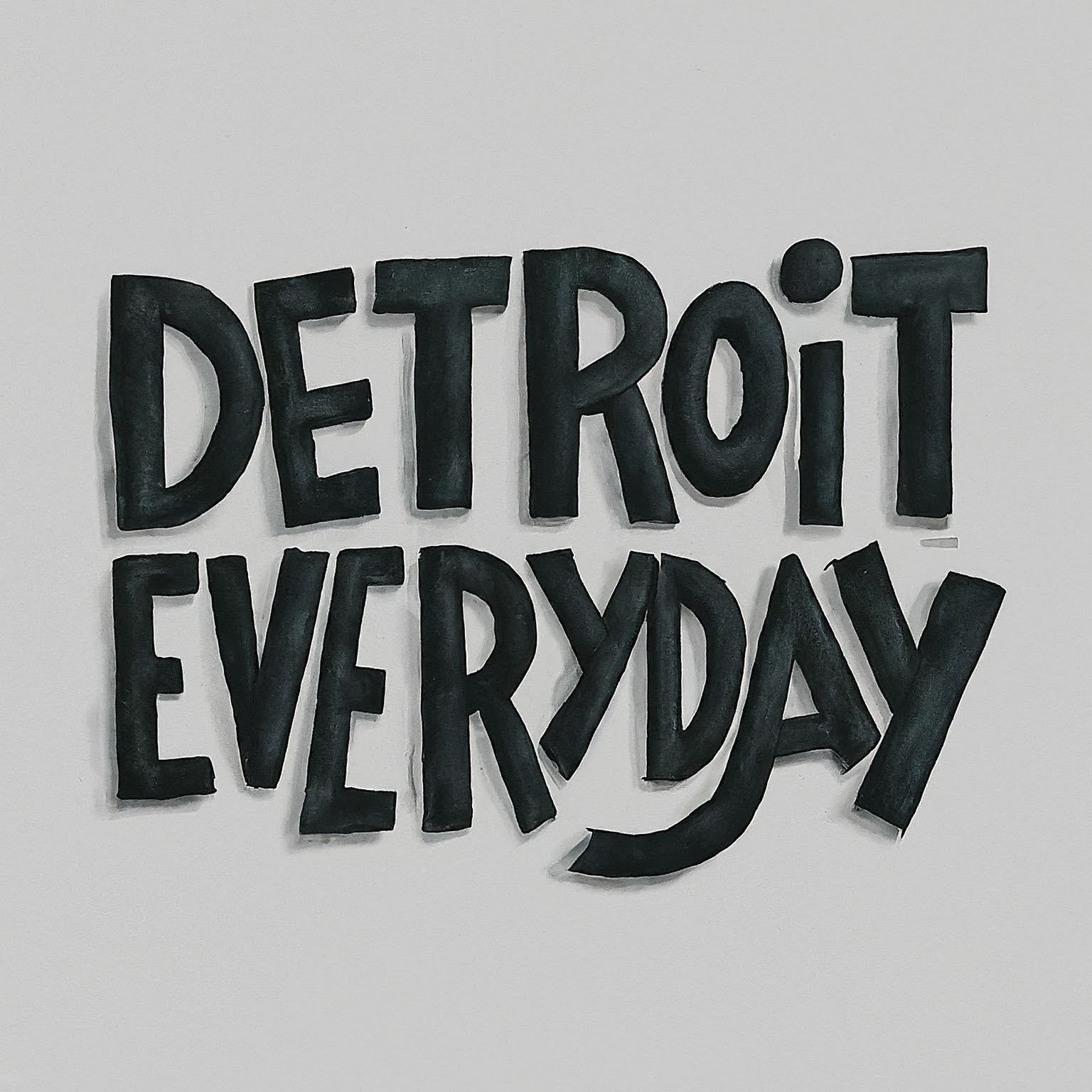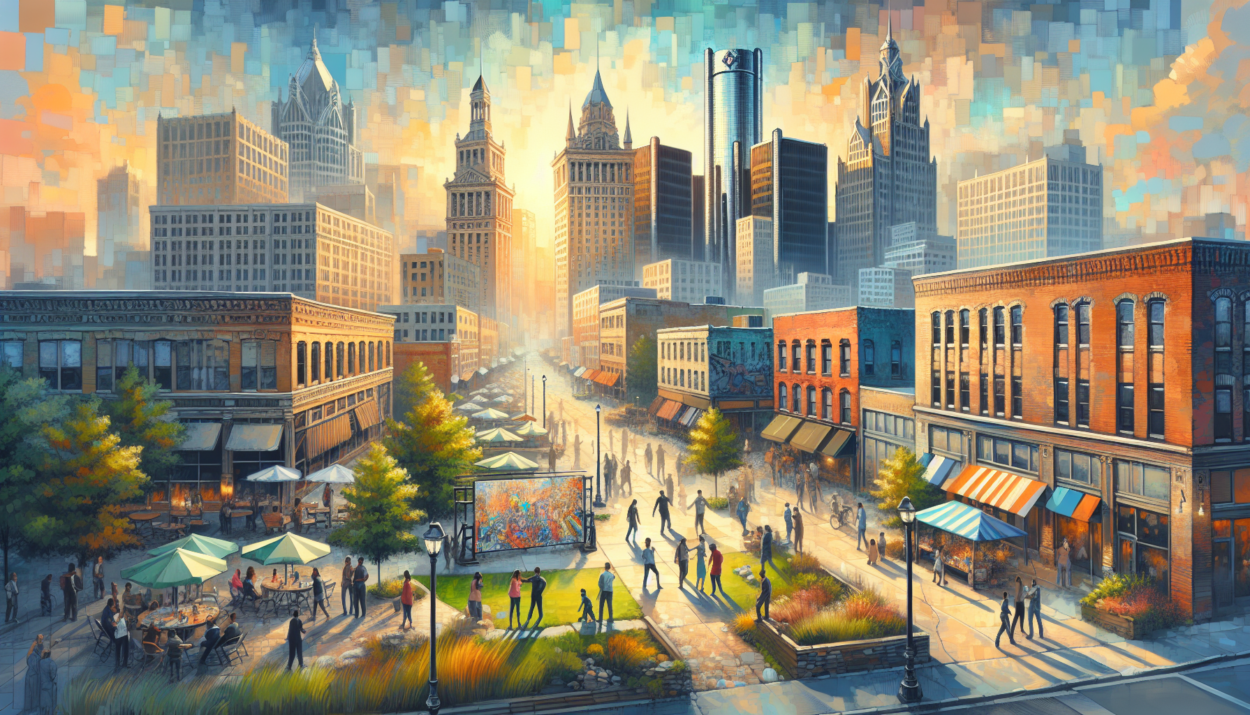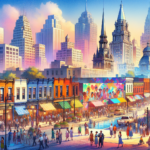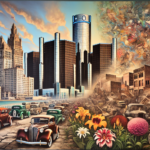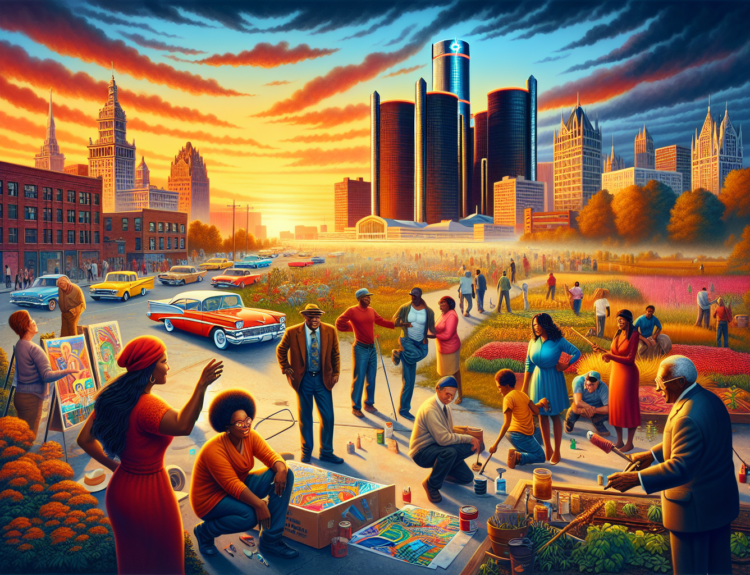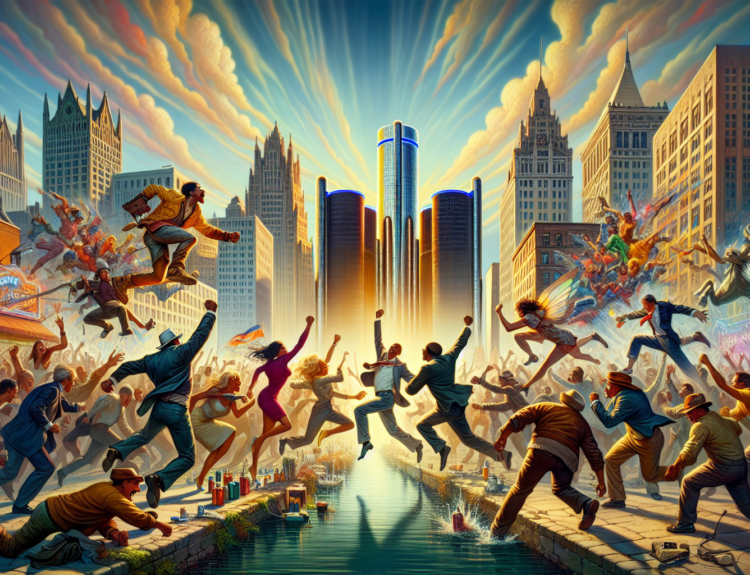Detroit: A City of Resilience and Reinvention
Ah, Detroit—born of grit, ambition, and some unrealistically high hopes attached to the American Dream. A city oscillating between nationwide notoriety and the affectionately coined title, “The Motor City,” Detroit has been a living organism, breathing history, culture, and a complex social narrative into the realm of American urban landscapes. From the glamor of Motown to the rocky roads of economic collapse, Detroit’s story is an ever-evolving tapestry threaded with the fabric of its citizens’ lives.
First settled in 1701 by Antoine Laumet de la Mothe, sieur de Cadillac (not precisely the car, but I wouldn’t be surprised if they named it after him to woo the folks), Detroit wasn’t always painted with a coat of struggles. It grew steadily, powered by rivers and railroads, emerging as a crucial industrial hub. Before you knew it, everyone wanted a piece of the American Dream, and Detroit was producing more cars than kids were getting candy after a good Halloween haul.
The Rise of the Auto Industry
Fast forward to the early 20th century, when everything started revving up—quite literally. The auto industry descended upon Detroit like a ravenous pack of coyotes in search of a juicy steak. Henry Ford perfected the assembly line, and suddenly, every household wanted a shiny new Ford Model T parked out front. I mean, who wouldn’t want to roll around town in a box on wheels that doubled as a church pew on wheels?
Detroit became the birthplace of iconic brands: Ford, Chrysler, and General Motors. United with a shared destiny, they transformed a lakeside settlement into an industrial powerhouse. People came from all over, lured by promises of rainchecks in the form of golden jobs that could buy you more than just a hotdog at the local Coney Island—though you’d probably get that, too.
Of course, that era was marked by labor movements, striking workers demanding fair wages, and incredible innovations that fueled not just automotive manufacturing but also broader societal changes, including the Great Migration. African Americans from the South flocked to Detroit, and just like that, the city became a vibrant mosaic of cultures and communities.
The Glitz and the Grit
However, time has taught Detroit a thing or two about humility. The mid-20th century, once a peak moment, soon gave way to crumbling industries, sprawling suburbs pulling families away, and a notorious decline in population. It’s a miracle of fantastic proportions that the city didn’t fall off the map entirely, particularly when bankruptcy legally became part of its resume in 2013.
But if there’s anything that the Motor City folks know, it’s that the spirit of Detroit could probably survive an apocalypse. With a massive $18 billion debt cloud hanging overhead, many predicted it could become a wasteland—just a rusting graveyard for cars without tires. But instead of throwing in the towel and surrendering, the city waved its white flag embroidered with the words “We’ll be back.”
Up from the ashes like a phoenix (though I can’t promise it looked good on the way up), Detroit came back swinging. The revitalization kicked off with grassroots initiatives, real estate investments, and a burgeoning arts scene that turned abandoned buildings into wonderfully weird galleries. Suddenly, murals bloomed on every neglected wall, each painting proudly telling tales of the city.
The Culinary Scene: Come for the Coney, Stay for the Everything Else
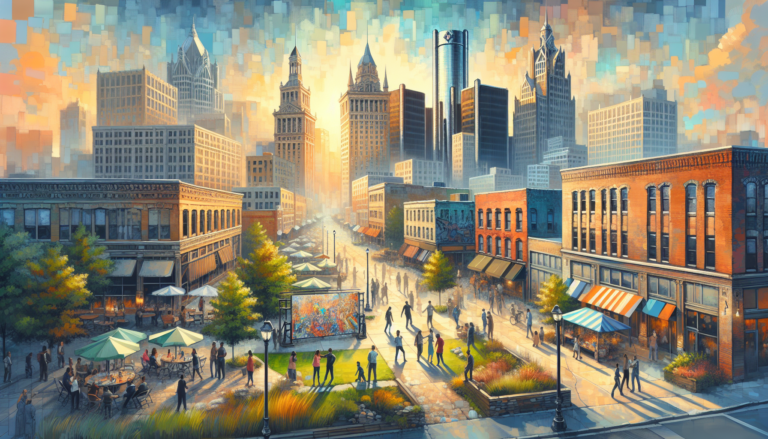
Detroit wasn’t just busy polishing the ol’ auto industry; it also pulled together a culinary scene to rival any high-flying metropolis. Let’s face it, no trip is complete without a visit to a Coney Island diner. You can get a hot dog piled high with chili, onions, and yellow mustard so rich it could feature in an Easter Sunday sermon. But while the Coney remains a staple, the real food revolution is happening.
You can meander through Eastern Market, where you’ll discover everything from artisanal cheeses to the freshest of produce, often ensconced in an atmosphere more festive than a wedding with a cash bar. Food truck gatherings are an enjoyable sight, with a rotating cast of characters serving up cultural cuisines from around the globe. You can find tacos, Greek gyros, Vietnamese banh mi, and even vegan delights—if that’s your jam. Honestly, if we were giving awards, Detroit would be a heavyweight champion in diversity and flavor.
And can we talk about Detroit-style pizza? I mean, who knew baking in a rectangular metal pan could result in a taste bud explosion? The thick crust that’s crispy on the outside and fluffy on the inside, topped unapologetically with cheese all the way to the edges, followed by a rich tomato sauce slapped right on top? Eat your heart out, New York!
Sports: More than Just a Pastime
Sports have long served as the heartbeat of Detroit. From the electric atmosphere at a Tigers game at Comerica Park to the roaring crowds at Little Caesars Arena watching the Red Wings or Pistons, the palpable energy is both invigorating and comforting. You’ve got to hand it to the sports fans in this town; they have survived multiple rebuilding years while still decking themselves out in jerseys and caps, praying for a miracle each season.
But what distinguishes Detroit sports from the rest of America is a sense of loyalty that’s akin to familial affection. When the Lions (or as we affectionately call them, the ‘Cursed Cats’) throw up their hands and let another season slip away, it’s not the fans who leave; instead, they double down, emphasizing next year’s hope stronger than any celestial force imaginable. It’s the camaraderie built around shared suffering, and it’s a beautiful thing to behold.
The Art Scene: A Cultural Renaissance
Detroit’s art scene is like that weird uncle who shows up to the holiday dinner: puzzling, captivating, and you’re always left wondering how you ended up here — but you’re secretly glad you did! The city may have once been synonymous with car factories, but now, it struts down the avenue with a renewed sense of artistic identity.
The Detroit Institute of Arts boasts a collection that would make even the snootiest art critics shed a tear of joy—or disdain, depending on their mood. From Diego Rivera’s murals chronicling the city’s industrial age to the contemporary works that challenge societal norms, the museum is more than just a pretty building; it’s a cultural lighthouse, guiding people through the rich history of the community.
Street art flourishes like wildflowers bursting through the sidewalk cracks. Detroit is a canvas where new narrators find their voice, painting murals that address social issues, celebrate local heroes, and reclaim the urban landscape. Festivals like the Detroit Design Festival and Movement Electronic Music Festival ensure that the city remains a hub for creativity and innovation.
Education, Innovation, and the Future
In recent years, an emphasis on education has emerged as a cornerstone for Detroit’s renewal. The city is nurturing talent within its walls, laying down roots in STEM fields, art, and entrepreneurship. The younger generations are gravitating towards tech startups, art initiatives, and even community activation projects that invest in local neighborhoods.
Universities like Wayne State University and the University of Detroit Mercy are doing their part to cultivate young minds and forward-thinking leaders who just might crack the code on revitalizing this city further. Moreover, organizations and grants focus on sustainability, keeping the conversation alive about how to innovate without losing the soul and character of Detroit. Let’s face it: if there’s anyone who can outsmart a problem, it’s a Detroiter. Just don’t ask them to parallel park; that’s a different story!
Where’s the Hope? It’s Within Us
As the dust settles from decades of turmoil, there’s hope in the air — intoxicating like a freshly brewed cup of coffee from one of those hipster cafes that seem to be popping up every other block. Detroit isn’t just bouncing back; it’s not merely a revival; it’s an evolution. The bubbling excitement surrounding innovations, cultural mixing, and community initiatives are giving the city a whole new lease on life.
But let’s not forget the reality of the situation. Detroit has its challenges. Crime rates can give you enough material for a gritty crime novel, and economic disparities still run deep. Yet, as the saying goes, “You can’t keep a good city down,” and the people of Detroit are doing their damnedest to make sure everyone knows it.
Despite all odds, the residents refuse to surrender their love for their city. They drive through potholes that resemble lunar craters with a grin, don their red and blue pridefully, and continue to make Detroit a beacon of resilience amid adversity.
The Final Lap: A Love/Tough Relationship
As a lifelong citizen in this patchwork quilt of triumphs and tribulations, I’ve learned something profound: love for Detroit is unwavering. Yes, it’s a rocky road filled with challenges, awkward neighborhood disputes, and culinary discoveries that can’t always be counted on. But you can’t help but smile amid the chaos.
Let me end with this — every city has its pros and cons, but Detroit wears its heart on its sleeve while maintaining a wry sense of humor about itself. Like navigating the winding streets through downtown construction, there’s always a way forward. While we’re not all blessed with a Super Bowl ring every year, being a Detroiter means every day can feel like an adventure—sometimes a comedy, sometimes a drama, and often a thrill ride.
So here’s to Detroit—a city that laughs in the face of adversity, embraces creativity, and always finds a way to keep moving ahead, like a well-oiled machine. Here’s the hope that the world looks back at the city and understands that every grit stain tells another story of resilience, grit, and a dash of humor.
Join our email list to stay updated on the latest news and exciting prizes!
